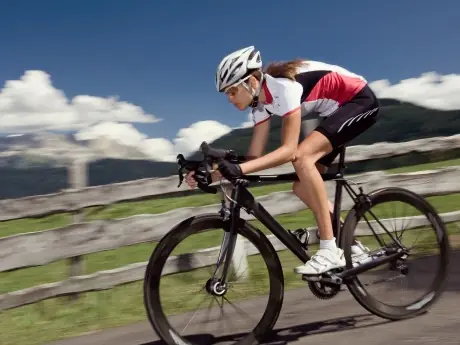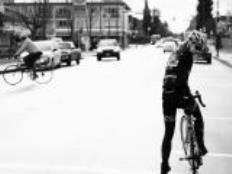
You've completed every training ride and double-checked every piece of gear in preparation for your first century. You've even followed a nutrient-rich diet in the months before your event. Just one final challenge remains: finishing on race day.
Don't let anxiety affect your first century ride. Follow these 12 tips to make your 100-mile journey an enjoyable, stress-free event.
1. Pace Yourself
Your first century is not the time to see how fast you can ride 100 miles. Start at a pace that's easy to maintain. Keep in mind that your heart rate may be elevated at the start from nerves or excitement, so pay attention to your breathing rather than your heart rate. A good rule is to ride at a pace in which you can talk comfortably with your fellow riders.
More: How to Ride by Listening to Your Body
2. Eat Every Hour
If you pace yourself and eat enough food, you'll finish your century without difficulty. Set a goal to eat 200 calories of carbohydrates every hour during the race, including the first hour. If you wait to eat until the second half of your race, it's already too late.
If you're a smaller rider, you can eat a little less that the recommended 200 calories. If you're a bigger rider, you'll need to eat a little more. Be prepared to take enough food with you that you don't have to rely on the food at the aid stations.
More: Century Nutrition Tips
3. Drink to Satisfy Thirst
Drink enough fluid to satisfy your thirst, but be careful not to overdo it. If you get slightly dehydrated it won't affect your performance. If you drink too much fluid, you risk hyponatremia (very low blood sodium), a potentially fatal condition.
More: Does Hydration Affect Performance?
4. Stick to Familiar Nutrition
Try to find out before the race what will be available at the aid stations. If this is what you've been eating and drinking during your training rides, you won't have anything to worry about. Be careful not to try new food or drink and risk an upset stomach.
5. Be Careful Riding in a Group
Riding in a group, sharing the workload and chatting are part of the fun of an organized ride. However, if you aren't familiar with your companions' bike handling skills, be careful and don't risk a crash.
More: How to Ride in a Group
- 1
- of
- 2
About the Author










Discuss This Article